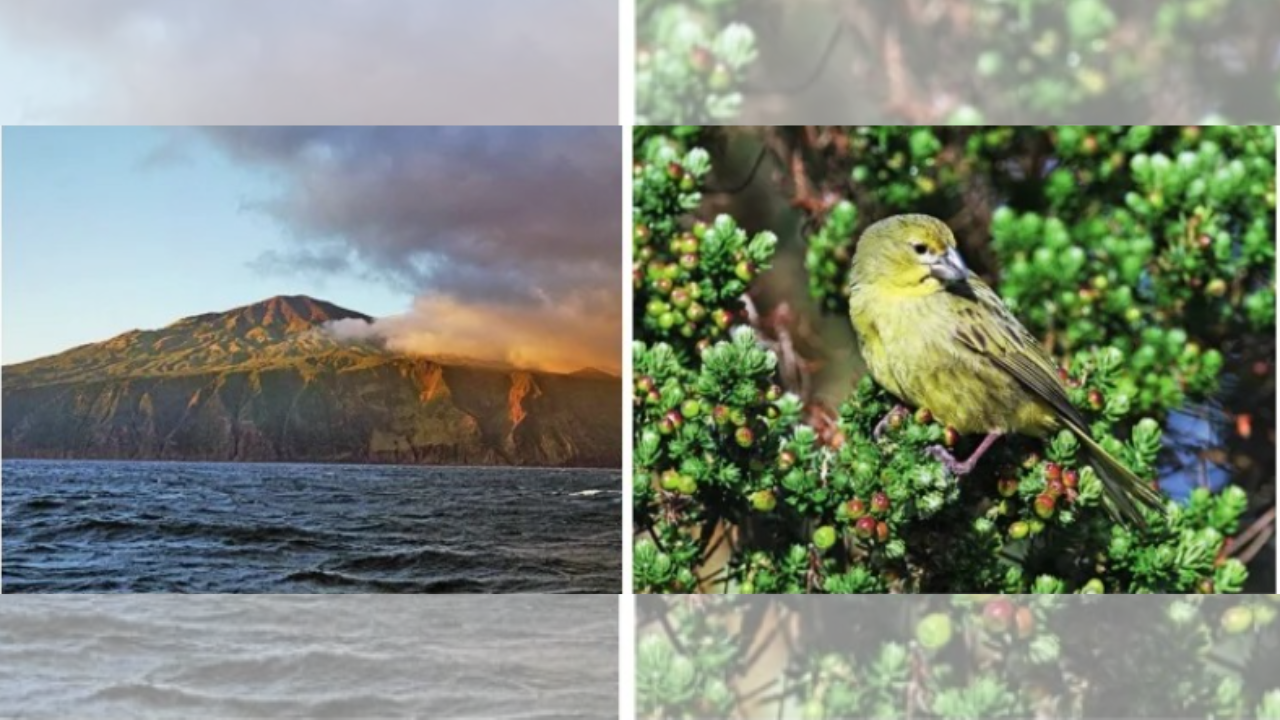this story is from October 12, 2024
‘To save the Wilkins bunting, we transported killer wasps to the world’s most remote isles’

What is the core of your research?
I’m an entomologist and ecologist with CABI, an inter-governmental body with 48 member countries including India, providing expertise on agriculture and the environment. I have worked on grassland ecology where we’ve studied the biodiversity of insects and other invertebrates in managed pastures and we’ve also researched the role these species play as food sources for farmland birds. Across many parts of Europe, bird populations are now declining — we’re trying to find ways to improve their numbers while safeguarding farmers. I also work on biological control projects worldwide, trying to reduce invasive species from weeds to pests, using their natural insect enemies.
1,000 MILES ON TOP OF THE SEA: The Tristan da Cunha archipelago (L) forms the most remote islands in the world — it is home to endemic wildlife like the Wilkins’ bunting (R) which has evolved a strong beak to feed and survive there (Pictures: Norbert Maczey (L) & Peter Ryan (R), CABI.org)
Can you tell us about Nightingale Island and your work there?
This is among an archipelago called Tristan da Cunha which has three small islands. The main one is Tristan itself, with a live volcano on it that last erupted in the 1960s. This group of islands is located halfway between the southern parts of Africa and South America, at around 40-degree latitude. It’s over 1,000 miles in each direction with open sea — these are the most remote islands in the world, with just 250 people living on Tristan. Nightingale Island and Inaccessible Island, the two smaller outlying isles, are uninhabited.

A number of factors now pose a threat to these finches. The first is climate change which is causing more frequent extreme weather events — in 2019, a massive storm brought down many of the native Phylica trees on Nightingale, shrinking the birds’ food source. Second, there was an invasion recently by brown soft scale (Coccus hesperidum) insects — these pests secrete a honeydew-like substance on leaves and stems, damaging them. These suddenly appeared on Nightingale Island and began spreading on its trees. Once these species build up a large population, they actually exude somuch honeydew, that attracts a dark sooty mould onto plants, inhibiting photosynthesis — this hits the trees more than damage by the insects themselves. The soft scales also did this unimpeded on Nightingale Island as they had no natural enemies to control them.
How did you hit upon the idea of using a wasp against them?
We researched many parasitoids which could attack these soft scales and finally selected the Microterys nietneri wasp as the most effective and safe — biological control absolutely requires risk assessments that avoid any negative side-effects. You can only release a control agent which is a specialised feeder on your target and won’t impact anything else. The wasp we selected thus feeds on several scale insect species. It is also already present in South Africa, an important consid-eration as the only transport to Tristan da Cunha is through Cape Town — so, we needed a species which couldn’t accidentally cause any damage in South Africa.
How did you transport these wasps?
This was quite difficult. These little wasps only live for 10 to 20 days as adults. We had to keep them cool to extend their life span — so, we put them in little glass vials at low temperatures. These cool boxes had to be hand-transported — but this was at the height of the Covid pandemic. There were many quarantine restrictions in place, against which we had to transport the wasps, first to Cape Town, stopping at Dubai where the temperature was high. We kept monitoring the cool boxes with a data logger and saw them getting warmer — but they survived. Then, from Cape Town, we moved them onto a boat which is the only transport to Tristan. We used a converted fishing trawler — but due to Covid restrictions, the boat had to sail for two weeks before we could alight.So, it took the wasps three weeks to get from the UK to Tristan — from 300, just a dozen survived. However, they established themselves successfully. Some were later moved to Nightingale. Over the last year and a half, the wasps have multiplied into several thousand, destroying the scale insects — and letting the Phylica trees recover and grow. The ecological balance on Nightingale Island is restored — the revival of the Wilkins bunting looks very promising now.
Download
The Times of India News App for Latest India News
Subscribe
Start Your Daily Mornings with Times of India Newspaper! Order Now











All Comments ()+^ Back to Top
Refrain from posting comments that are obscene, defamatory or inflammatory, and do not indulge in personal attacks, name calling or inciting hatred against any community. Help us delete comments that do not follow these guidelines by marking them offensive. Let's work together to keep the conversation civil.
HIDE